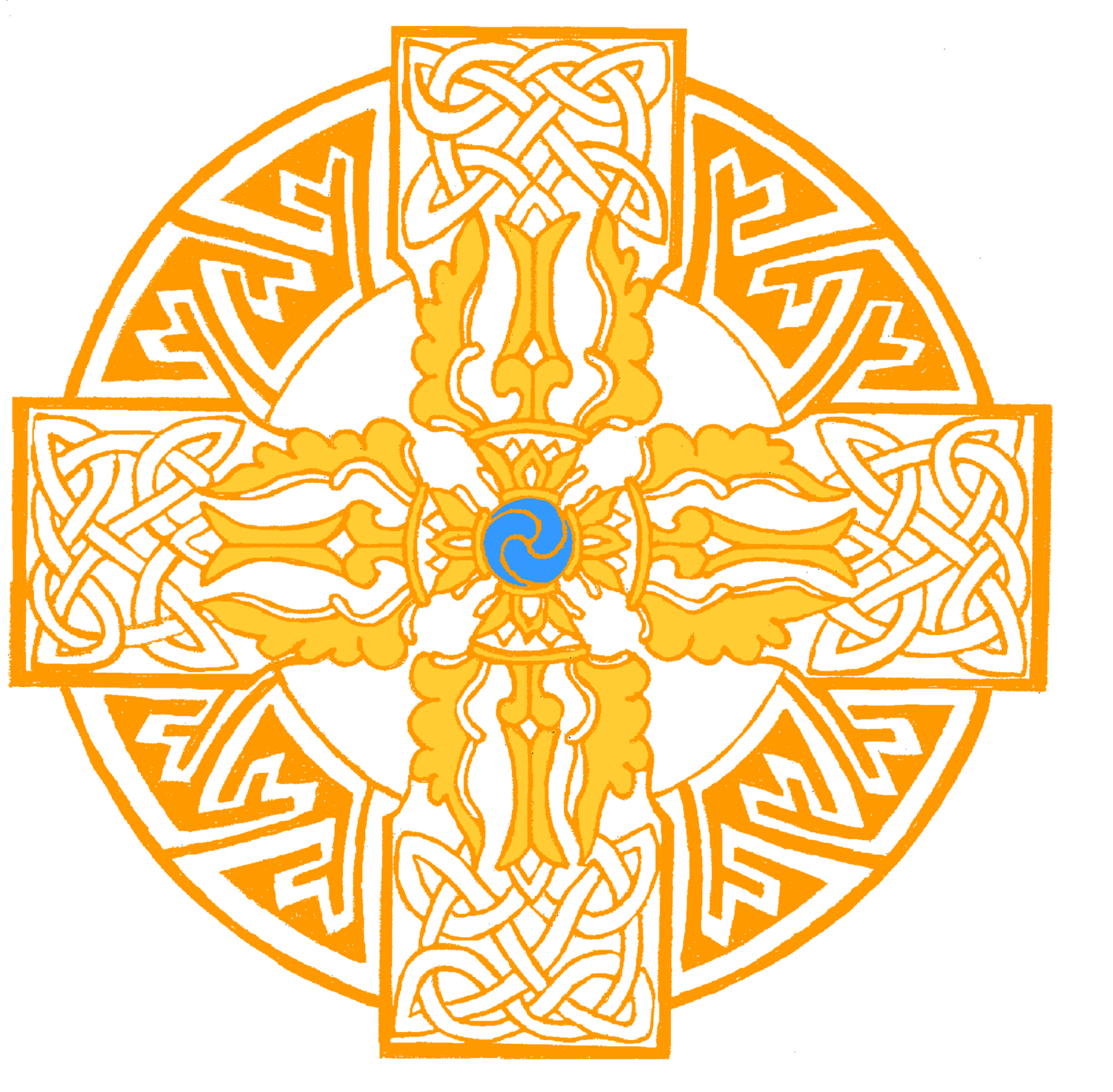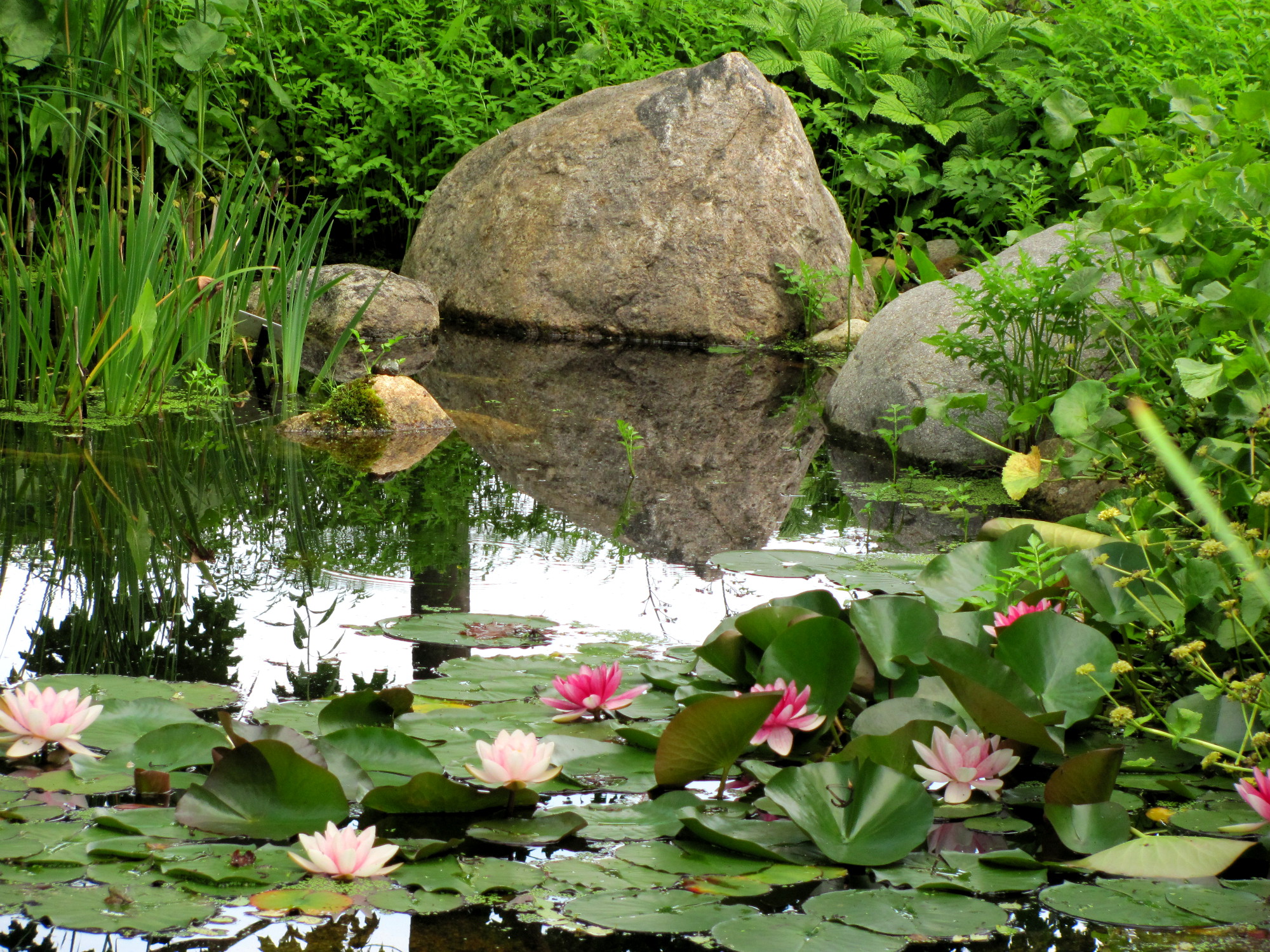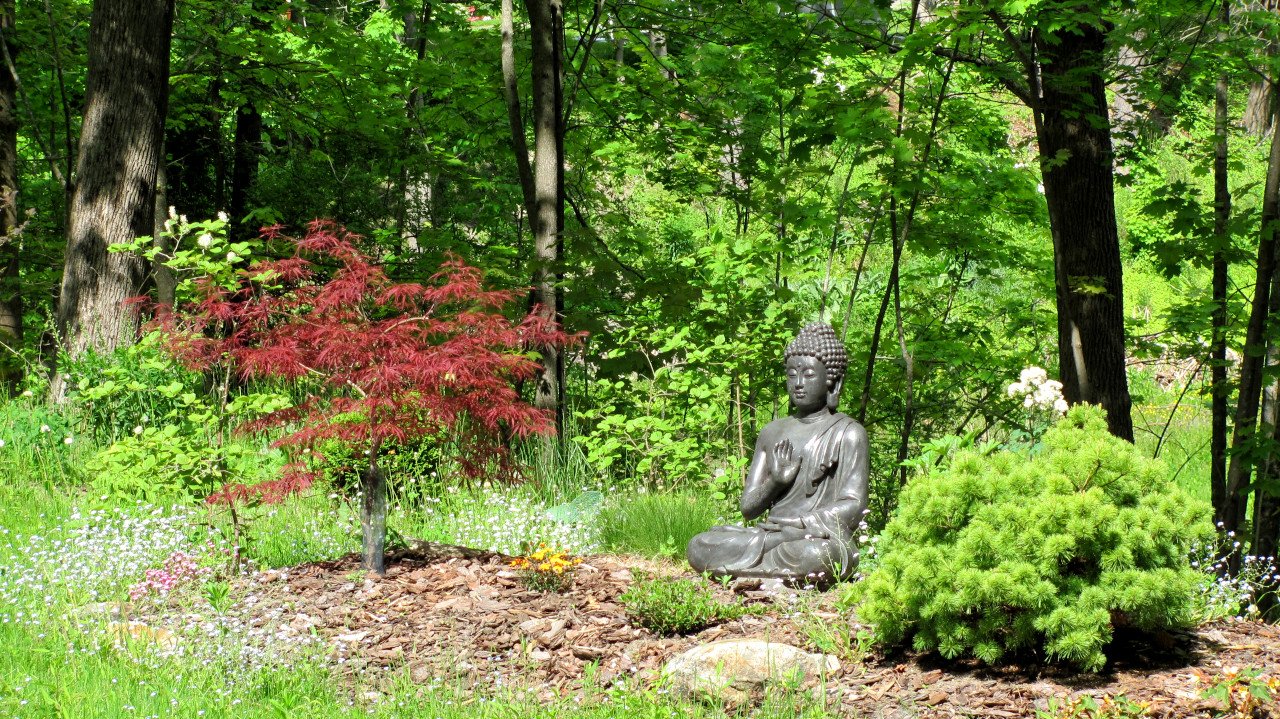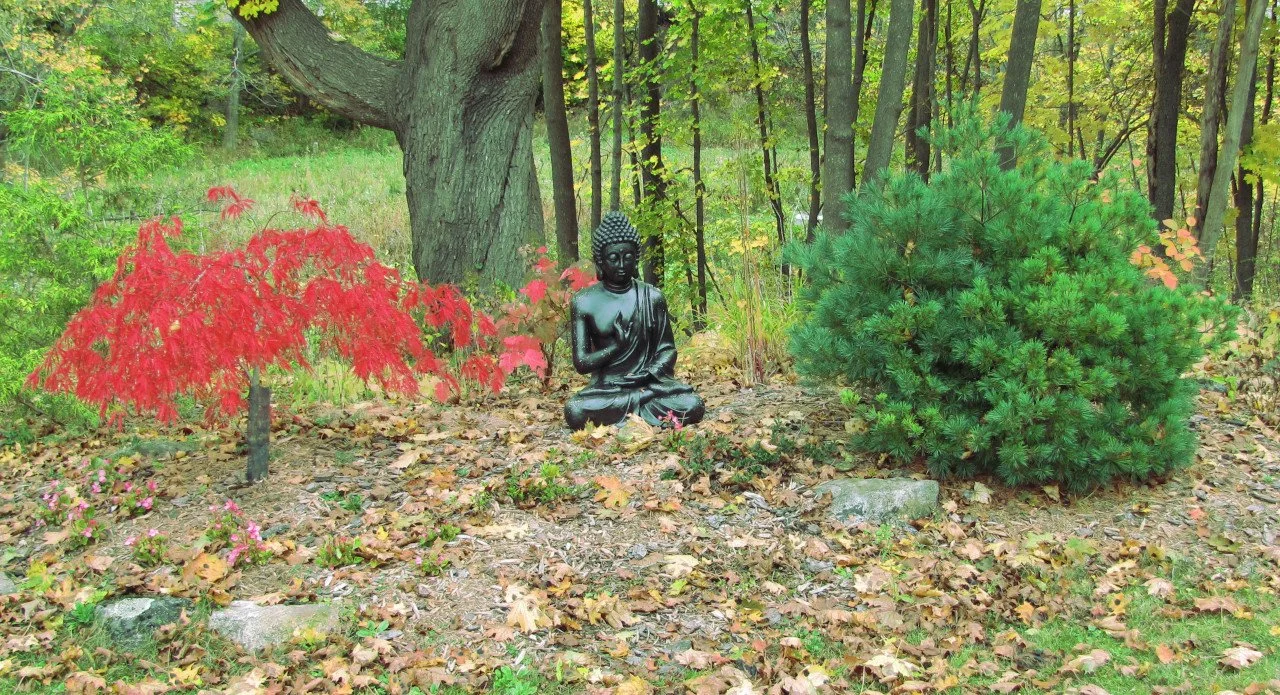Celtic Buddhism is...
The Open Nature of Celtic Buddhism
H.H. Seonaidh Perks
Welcome to the the Celtic Buddhist website. We hope this site will be of some benefit and inspiration to you as you enter or proceed on the path of Dharma.
The lineage of Celtic Buddhism was suggested in the 1970's during conversation between the renowned Tibetan lama Chogyam Trungpa Rinpoche and his student John Perks. The actual development is the result of the mixing of their minds. The lineage was formally incorporated as a non-profit in 1989, when it took on an official status. After meeting for years in rented rooms Venerable Seonaidh Perks established the Anadaire Celtic Buddhist Center on 11 acres in Saxtons River, Vermont, where the sangha erected a stone circle which has aided in increasing and focusing energies of transformation.
Sangha members are encouraged to establish a daily meditation practice. Practices range from a host of traditional Tibetan Buddhist practices to the more contemporary practices of the Celtic Fire visualization and working with the mandala of the Celtic cross. Also, we encourage integrating everyday practices in art, music, healing modalities- including animals, and in the business world. As a group some of our members have gone on yearly retreats to Maine or, to further connect with the latent Celtic energies, Ireland and Scotland. One member has delved into thangka painting to explore the emerging Celtic Buddhist mandala. And in March 2010, we celebrated the ordination of Sister Griffin as Abbess of Glen Ard Abbey, the newly formed Celtic Buddhist monastery.
As you can imagine, the development of a new lineage is a very interesting and potent situation. Staying open and intuitive is both the challenge and the opportunity. Venerable Seonaidh Perks says of Celtic Buddhism: "It's still a big question mark as to what Celtic Buddhism is going to evolve into. It's important to make the question mark very big, so that it remains a big open question. Not only about oneself, but the society in which one lives. Celtic Buddhism could be viewed as an open exploratory adventure with no conclusions."
Yeshe Tonpa (H.H. Seonaidh Perks) teaching in Ann Arbor, Michigan -2016
The archetypal deities of ancient Europe still exist in many peoples' psyche or mind. Seonaidh believes that these energies are actually based on or emanate tremendous compassion which has become overlaid with habitual clingings and fixations. The stripping away of this neurotic sludge is the starting point of Celtic Buddhist practice. Therefore, students and practitioners engage in form and formless meditation practices as the foundation for Celtic Buddhism. These include calm-abiding, resting in the nature of mind, clear insight, and the "sending and taking" practice of loving kindness that develops a deeper altruism toward beings who may be in a state of suffering or confusion. Further practices at this time may include Deity yoga and the cutting through practice of Chöd
Watch a video: Conversation with John Perks
Buddha Mound Garden in Maine 2022
Mound Buddha Garden in Maine 10-25
Sovereignty Stone --Anadaire Buddhist Center, Saxtons River, Vermont
Celtic Buddhism began around 1989 through the influence and relationship of Seonaidh Perks with his Tibetan teacher, the Vidyadara Chogyam Trungpa Rinpoche.
Conversations with Trungpa Rinpoche about Traditional Celtic Spirituality
H.H. Seonaidh Yeshe Tungpa speaks:
In our travels together, Trungpa Rinpoche would often talk about the early Celtic monks. In one story he told me that the novice monks would learn to read and write and then be cast upon the ocean in a small boat, presumably a corricle.
With only a book of Psalms and a bell, they set off on their journey and where they landed, they would be expected to spread Christianity to the native population. My friend, Kidder Smith recently sent me a letter with a quote from a book on St. Columba. “Living in the Ocean”
The waters of the ocean ‘was qualitatively different from other waters in that it was at the very limit of inhabitable reality and its shore marked the point of the separation between the waters and the dry land. (Gen 1.9). This was the primeval ‘abyss’ Gen 1.2), the home of Leviathan (cf. Job 41.23 for example) (Day 1985; 1992); it was also connected with the abode of demons (Luke 8.31) and Satan (Rev 20.1-3), and from it, at the end of time, the apocalyptic beast would arise to bring destruction to mankind (Apoc 11.7; 17.8). This threatening aspect of the Ocean seems to be present in most biblical references: it is a place of power and darkness, and is always to be treated with caution.Gatering the various references to the sea, names of different monsters (e.g. Leviathin, Rahab, draco). And the abyss, a picture emerges of the Ocean as a place where a great struggle between God and evil is taking place (Wensinck 1918; Raymond 1958; Day 1985; Konstan 1987; Borsje 1996). In Christian works from the Mediterranean basin part of the life of the hermit/monk is to go and do battle with the demons. These battles are envisaged as taking plasce in remote regions of the desert where the demons lurk. The monks of Iona could consider their own island as a similar theatre of operations in the war against demons: demons were as close to them in the Ocean as they were to St. Anthony in the the deserts of Egypt.’
It is a simple narrative of one’s constant awareness in the process of good and evil…whereas in your mind stream you are presented constantly between the choice of doing the right thing to benefit others or yourself. It is simple or rather like everything you see as dwelling in the mind of God or the undefined mystery of that – and to try to avoid one’s own awareness of going crazy. For awareness is everything… Always keep your awareness.
I have noticed sometimes people taking drugs or alcohol will lose their awareness and become crazy. If one is constantly visualizing the guru sitting upon one’s head, then one dwells in the mind of the guru or the mind of the deity. These aspects can bring you back to your awareness or devotion. I think what Trunpa Rinpoche was trying to convey to me was the practices of the early Christian monasteries. Again, of devotion and prayer and simplicity, Trunpa’s famous saying was “keep it simple”.
Trungpa Rinpoche used to say: “I won’t be around to confirm anyone”. So we were all on our own and the spreading of the Dharma after his death followed myriad paths, each with its own validity. So for someone to say, this is the right path and that is the wrong path is not seeing the vastness of the ocean of Dharma…
Ctrl + click to follow link:
Our Beginning
Lame Deer
In the winter of 73, after the first seminary, I was living in Boulder Colorado and was invited to dinner by John Fire Lame Deer, the Lakota medicine man. We were talking about my working with Trungpa Rinpoche and he said, “You should give yourself to it, totally.”
During dinner, the discussion was about culture and Lame Deer said to me, “You know we get a lot of white guys coming out to the reservation wanting to do sweat lodge, pipe ceremony, and sun dance. But this is not their tradition. They should go back and look at their own ancestral heritage. Otherwise, you just have a bunch of white guys playing Indians, like they do in the movies.
At that time, the idea of Celtic Buddhism arose in my mind stream. Seonaidh Yeshe Tungpa
Why Celtic Buddhism is Not a Religion
The purpose of religion is to perpetuate itself, a system that over time solidifies and centralizes. For survival its main occupation is self preservation above and beyond its stated mission. That is inevitable and my stating it does not mean I think religion is necessarily “bad” or should be done away with completely. Although in recent times it can be easy to pick on religion itself, with issues like the Catholic Church sex scandals, death threats because of depictions in cartoons, and constant wars between adherents of different religions.
To be fair there also needs to be a list of favorable things that have been done in this world because of religion. Charitable organizations, providing refuge for dispossessed peoples, and providing codes of conduct to multitudes of unruly humans are just a few. Like any tool, religion has its purpose and the Buddha taught that it should simply be a raft to the other shore. When you take a raft to the other shore it should seem quite ridiculous to then pick up the raft and carry it along with you. It makes much more sense to leave the means of transport behind. That is how the Buddha taught his disciples to relate to his teachings. Our desire as practitioners in the lineage of Celtic Buddhism is to follow this fundamental instruction and focus not on defending, overly cherishing and/or attaching to any one version of the “path.”
Don’t be mistaken, what is taught in Celtic Buddhism is a complete path, but not one that works for everyone. As a commodity and/or sellable system to the masses, it’s not going to work. So we won’t try. In our Refuge prayer we take refuge in “the scoundrels, misfits and noble ones who manifest Buddha-wisdom by any means necessary.” This means that we try to seek instruction from any source, or I should say all sources, the birds, the trees, the streams, the sky and so on. It is elemental and instruction is focused on increasing our capacity to realize (not necessarily have glorious insights about) truth and love. We don’t just simply accept all instruction blindly, but consider it seriously and test it against experience and with each other. The point is we don’t claim to own or have the exclusive rights to enlightenment. We also don’t think we are better or more profound than others who practice or follow a religion. We just reserve the right to play and work with form and formlessness when it fits and, more importantly, when one seems to work better than the other. Our tools and teachings can be most aptly described as “upaya” or “skillful means,” and that fits in more with the essence of Buddhist lineages and Celtic culture.
Religion can easily become an exclusionary practice, especially in Buddhism, where the personality of the teachers and the comforts of the form and ritual can easily become the preoccupation. The true teaching should scare you and sustain you simultaneously. Because we are not a religion, and won’t become one anytime soon, we invite all who gather with us to scrutinize, question, inquire and never take what we teach and/or practice on faith alone. Save your devotion and direct it toward whatever enhances and develops truth and love in your own life. Our task is to contribute in whatever way possible to an enlightened society. Our lineage is an open mandala for the manifestation of pointed instruction for our dark age. The forms we use and establish serve only as a means for communication. Our embracing of formlessness is our acknowledging that what we are working with is essentially a state of being beyond mere words and any instruction.








